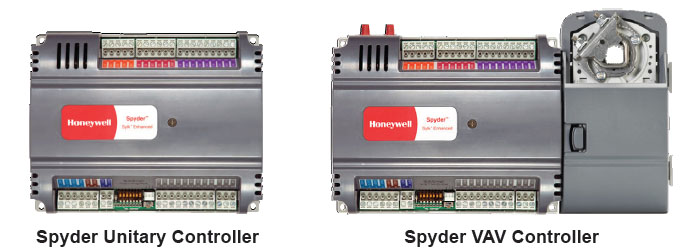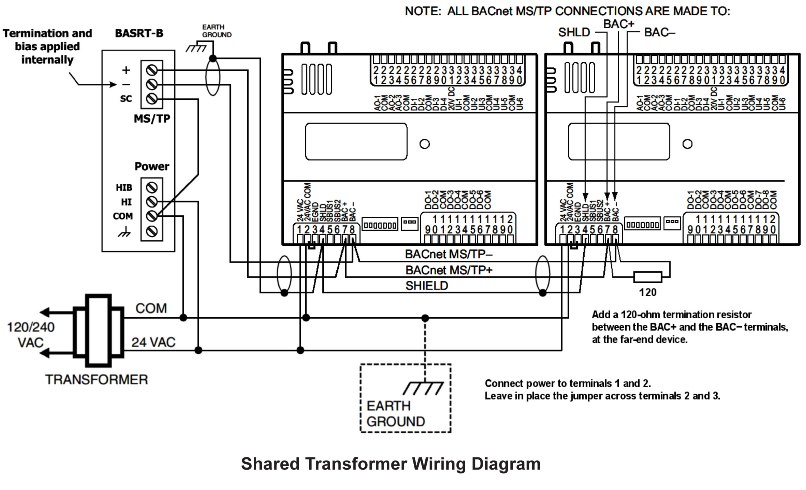Using the BASrouter with a
Honeywell Spyder Controller
George Thomas
President
Contemporary Controls
|
March 2013 |
[an error occurred while processing this directive] |
|
Using the BASrouter with a
Honeywell Spyder Controller Contemporary Controls’ BASrouter provides a simple, cost-effective
method to attach Honeywell Spyder BACnet MS/TP controllers to BACnet/IP
without the need of a building controller.
|
George Thomas President Contemporary Controls |
| Articles |
| Interviews |
| Releases |
| New Products |
| Reviews |
| [an error occurred while processing this directive] |
| Editorial |
| Events |
| Sponsors |
| Site Search |
| Newsletters |
| [an error occurred while processing this directive] |
| Archives |
| Past Issues |
| Home |
| Editors |
| eDucation |
| [an error occurred while processing this directive] |
| Training |
| Links |
| Software |
| Subscribe |
| [an error occurred while processing this directive] |
Contemporary
Controls’ BASrouter provides a simple, cost-effective
method to attach Honeywell Spyder BACnet MS/TP controllers to BACnet/IP
without the need of a building controller. This allows Spyders to
reside on the building’s Ethernet network without the need to provide
home-run fieldbus wiring to a head-end. Spyder controllers are
frequently used for both VAV and unitary applications. Originally
available as a LON device, they are also available as a BACnet MS/TP
device and therefore can be easily integrated to BACnet/IP with the
popular BASrouter.
Installing and operating the BASrouter (BASRT-B) with several Honeywell
Spyder controllers is simple and straightforward. Configuration of the
BASrouter is accomplished through web pages. Once the BASrouter is
properly installed and configured, all the connected Spyder controllers
can be accessible from any BACnet/IP client device.
In addition, the BASrouter supports three-way routing between
BACnet/IP, BACnet Ethernet and BACnet MS/TP. Any two or all three
protocols can be routed, thereby allowing the system integrator to mix
BACnet network technologies within a single BACnet internetwork. As an
aid to troubleshooting, a diagnostic page will display the number of
messages received and sent for each of the protocols supported.
Spyder Controllers
Honeywell
manufactures several Spyder BACnet MS/TP controllers for
unitary and VAV applications that can be accessible from BACnet/IP once
the BASrouter is in place. The following information is applicable to
each BACnet MS/TP model.
BACnet MS/TP data from the Spyder controllers are carried over a
two-wire non-isolated twisted-pair network. Spyder controllers
auto-baud. They wait until a head-end device — usually a building
controller — to send out frames so connected controllers can “wake-up”
and set their speed to that of the building controller.
The BASrouter takes the place of the building controller so its data
rate must be set during configuration thereby allowing the Spyder
controllers to automatically match their data rate with that of the
BASrouter.

Power Wiring
A typical wiring
diagram is shown. Like the BASrouter, the Spyder
controllers incorporate a 24 VAC half-wave rectified power supply
meaning that the BASrouter and the Spyder controllers can share the
same AC power source as long as the COM pin on the BASrouter and the
24VAC COM pin on the Spyder controllers are connected together as
shown. If separate power sources are used then an earth connection must
be shared by the COM and 24VAC COM pins. The BASrouter requires about 4
VA of power while Spyder controller consumption varies with the model.
Verify that adequate power is available when sharing a transformer.
Notice the grounding requirements in the wiring diagram.

Communication Wiring
The Spyder
controllers utilize a two-wire, non-isolated MS/TP network
while the BASrouter supports a 3-wire isolated MS/TP network. If
possible, install the BASrouter at one end of the MS/TP segment. This
will be called the near-end. Follow Honeywell cabling and grounding
recommendations. Notice that Honeywell requires that the shield be
carried to the head-end where it is then earthed. Connect the data pair
as shown observing polarity. A common ground reference is required in
order for the MS/TP transceivers to operate properly. Connect the SC
pin and the COM pins together on the BASrouter. Make sure an earth
connection exists between all the controllers and the BASrouter when
separate power sources are involved. This helps protect the data lines
from excessive common-mode voltages that could damage the transceivers
or create data errors. Although the Spyders utilize 1/4 EIA-485 load
transceivers, it is recommended not to exceed 63 controllers on a
network. The BASrouter consumes one load. If possible, try to limit the
network to about 45 controllers to improve responsiveness. Apply a
120-ohm terminator to the last controller on the far-end of the MS/TP
segment. The BASrouter has internal bias and termination applied
(default configuration) so the near-end is already terminated and
should not receive an external terminator. Do not apply any external
bias. If the BASrouter is installed mid-span, termination and bias can
be disabled by removing three jumpers inside the BASrouter. In this
situation, external bias and termination would need to be applied at
the near-end while external termination is applied to the far-end. A
mid-span installation of the BASrouter is discouraged. However,
if no bias source exists on the bus the BASrouter can supply this bias
by reinstalling the outer two jumpers.
Configuring the BASrouter
[an error occurred while processing this directive]Configuring the
BASrouter with a web browser is straight forward. Both
the BACnet/IP and MS/TP sides of the router need to be configured. The
following settings apply to the BASrouter itself.
A unique Device Instance must
be assigned to the BASrouter. If you are
only connecting to a BACnet/IP network and not to a BACnet Ethernet
network, leave the Ethernet Network
number at 0.
Typically, use the BACnet/IP UDP Port
default of BAC0. Set the IP
Address, Subnet and Gateway accordingly.
For the MS/TP MAC address of
the BASrouter, we suggest the default of
0. However, this is the default address for all Honeywell MS/TP devices
— so all Spyders should be set to a different address before attaching
them to the network. MAC address 0 gives the router the first
opportunity to grab the token. Select a unique MS/TP Network for the
MS/TP segment. Set Max Master
to 127 since the default setting of the
Spyder is 127. This can be changed using the Spyder tool. The Max
Master settings should be the same for all devices on the network. Max
Info Frames are not critical. Select a value between 30 and 100.
Spyder controllers auto-baud, meaning they remain silent until a
device, such as a building controller, begins sending frames. Once
traffic is sensed, the Spyder controllers match their data rate to that
of the traffic. Instead of a building controller, a BASrouter is used.
Set the MS/TP Baud rate to a
typical rate such as 38,400 or 76,800. For
MS/TP Tolerance, select Lenient.
Do not bother with the Advanced screen unless you must enable the BBMD
feature for IP router traversal. Consult the BASrouter application
guide for more information on sub-netted networks. When you are
finished with the settings, save the changes.

Configuring the Spyder controllers
Consult Honeywell
publication 62-0310-01 for installation instructions.
Using BDT to verify MS/TP
Communication
The BACnet
Discovery Tool is a BACnet/IP application for Windows® that
is easy to install and use. It is an excellent means for discovering
and verifying communication with MS/TP devices that are being accessed
through BACnet/IP routers such as those available from Contemporary
Controls: the BASRT-B DIN-rail mounted BACnet/IP-to-MS/TP router — or
its portable counterpart, the BASRTP-B. At Contemporary Controls we use
BDT with equipment from different BACnet vendors to prove our routers
operate with different equipment configurations.
Using the Search
function, BDT transmits BACnet Who-Is messages and a
progress bar appears.
When BDT has completed its search, the progress bar will disappear, the
discovered BACnet devices will be listed in the main window and the
number of discovered devices will be reported in the Devices Discovered
field — similar to the display below.

As shown in the sample screen above, each device identifies
About the Author
George Thomas is president of Contemporary Controls with headquarters
in Downers Grove, Illinois. For over 35 years, Contemporary
Controls has been designing and manufacturing the system building
blocks used to automate buildings, machines and processes.
Contemporary Controls has manufacturing locations in the United States
and China, and additional support offices in the United Kingdom and
Germany. George Thomas received his BSEE and MSEE degrees from
the Illinois Institute of Technology. He is a life senior member
of IEEE and a senior member of ISA. He currently serves on the
BACnet International Education Committee.
For more information, visit www.ccontrols.com, or
email info@ccontrols.com.
You can also find Contemporary Controls at
http://www.facebook.com/ContemporaryControls
and
http://twitter.com/ContempCtrls.
[an error occurred while processing this directive]
[Click Banner To Learn More]
[Home Page] [The Automator] [About] [Subscribe ] [Contact Us]